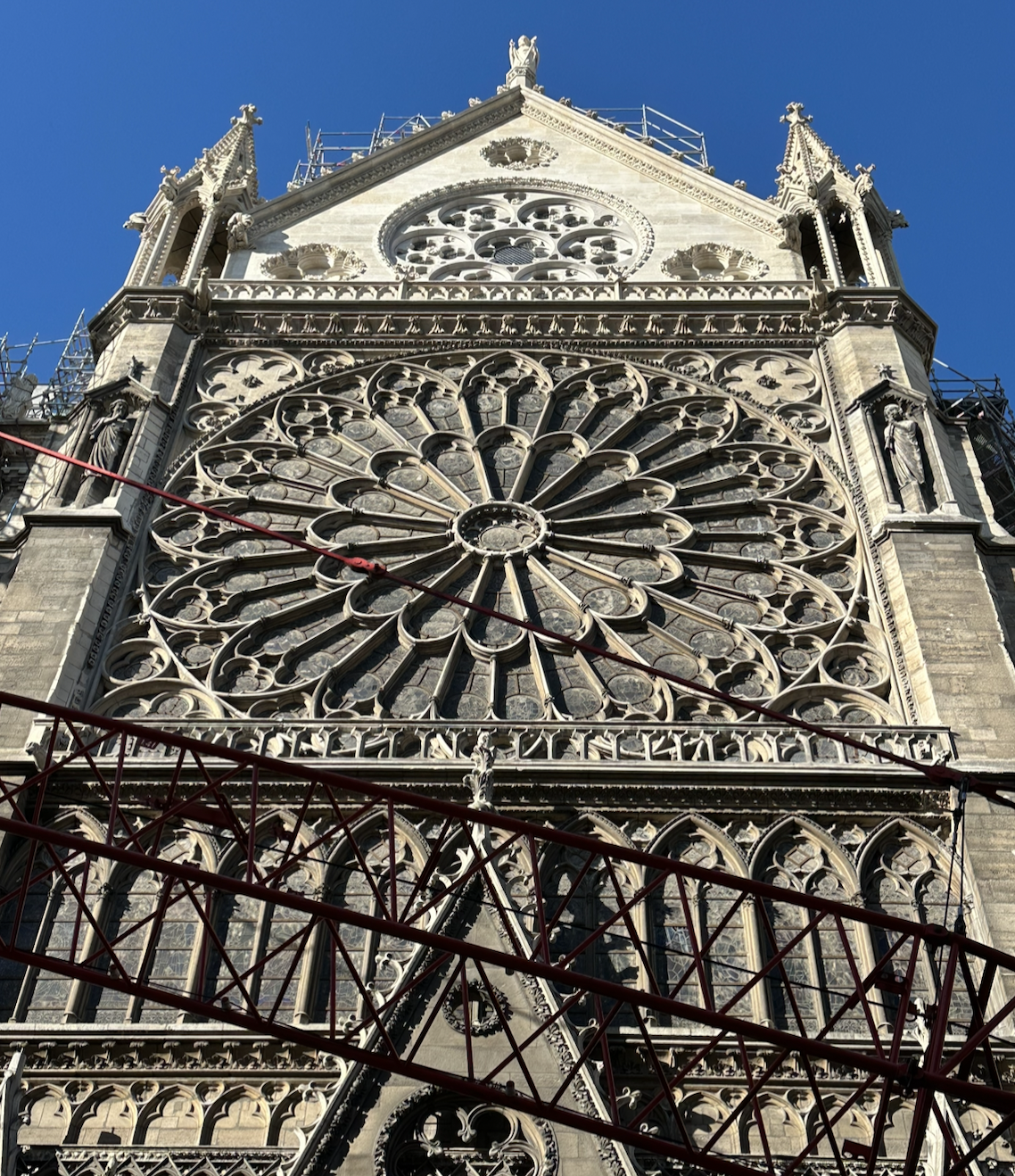In less than four months we will once again walk inside the Cathedral Notre Dame de Paris and I can’t wait!
For the last five years more than 2000 craftsmen have been working six days a week to rebuild and restore the Cathedral. When the doors reopen on December 8 it will return to how it looked exactly 160 years ago.
Eugène Violett-le-Duc took over the restoration of the cathedral in 1844 after Victor Hugo’s Notre Dame de Paris novel spurred interest in the once grand sanctuary that was crumbling. For twenty years he rebuilt the spire, replaced the statuary, returned stained glass windows to the walls, and added elements we love today.
The current head architect Philippe Villeneuve’s role is to bring back the former glory and respect of the architects of the past. I love that future generations will talk about Villeneuve the way we have talked about Viollet-le-Duc. Well maybe not exactly like me, since I love both of them deeply.
In the last few months, the worksite has rapidly changed. The silhouette has returned with the beautiful decorative ridge designed by Viollet-le-Duc. 2700 sheets of lead created and shaped in England have covered the roof. The spire is almost finished with just the lower open work waiting for its lead covering and in the next few months, the 16 statues will crown the edges and once again guard the spire.
The roof of the eastern end of the building over the choir apse marks the final point and return of the silhouette of the beloved cathedral. Made up of more than twenty sections of trapezoid-shaped lead sheets, the last sheet was installed on the 24th of July. Ornamental roofers added the ceremonial bouquet of flowers marking the completion.
Just above, is one of the most special of all pieces and the only thing that outlived the night of April 15, 2019. In 1860 Violett-le-Duc designed an iron cross that was covered with more than a hundred details. I arrived in Paris just four days after the fire and as I walked around the island I noticed the cross teetering on the edge of the roof near the north transept. Luckily it was rescued and restorers have spent more than 1000 hours cleaning, restoring, and gilding the cross in the atelier of Florent Boutroy. The 42-foot-tall cross was installed on May 24, exactly two months before the roof was finished.
On the night of the fire, as the spire fell and the roof disappeared the next fear was the 12th & 13th century rose windows. The small oculus opening over the grand rose saw flames raging through the window, but luckily the rose below was left unscathed. The same was true on the south side.
The transept crossing on the north and south sides is fully revealed, giving us a glimpse at the 13th-century rose windows untouched by the fire. At the top of each pignon that has been mostly rebuilt and restored where possible craftsmen and at times the skinniest they had worked around the clock to recreate the design of Viollet-le-Duc. Encased in scaffolding as the design elements of the turrets were added the space became so tight that the smallest of restorers were called in to add the last details. A total of 272 hooks, 14 chimeras, and 16 gargoyles on the north were created, and 192 hooks and 12 chimeras and gargoyles on the south.
Crowning the top of the pignons are statues copied directly from the original 19th century versions. On the south Saint Etienne, dedicated to the first church on this very spot. Saint Marcel, 9th bishop and protector of Sainte Genevieve, both were too damaged to be saved and were recreated from original plans. Original to the 19th century, at the top of the south is a statue of Christ and on the north side is Saint Denis, the first bishop of Paris who looks north to his final resting place at the Basilique Saint Denis.
Before they are fully revealed a patina was added so they will eventually blend with the rest of the exterior. I can’t wait to be back inside and once again look up at the beautiful windows.
When you stand just below the grand facade of Notre Dame the two towers stretch to the sky in front of us and hard to believe how close we were to losing the entire church. That night as the flames devoured the roof the fire inched its way to the north bell tower. We later learned that there was a twenty-minute window to either control the fire or watch the total destruction of the cathedral.
The towers hold the very heavy bells that ring out over the city on special occasions. In the north bell tower are 8 bells that are held in a tall wooden belfry. Supporting the bells they also help absorb any vibration that could damage the stone. That night the flames did reach the belfry and forever thankful to the pompiers of Paris they were able to extinguish the flames and halt any more damage.
Inspecting the belfry resulted in a few new beams or grafting new pieces. Before completion, a jack will raise the 150-ton belfry 11 inches to replace the three large pieces of wood. Two of the bells suffered from some heat and fire damage and are being restored along with the remaining six. They will return to the newly restored belfry in a few months.
Coming soon on the podcast we will share details on the interior and the new features added for the opening in December.




